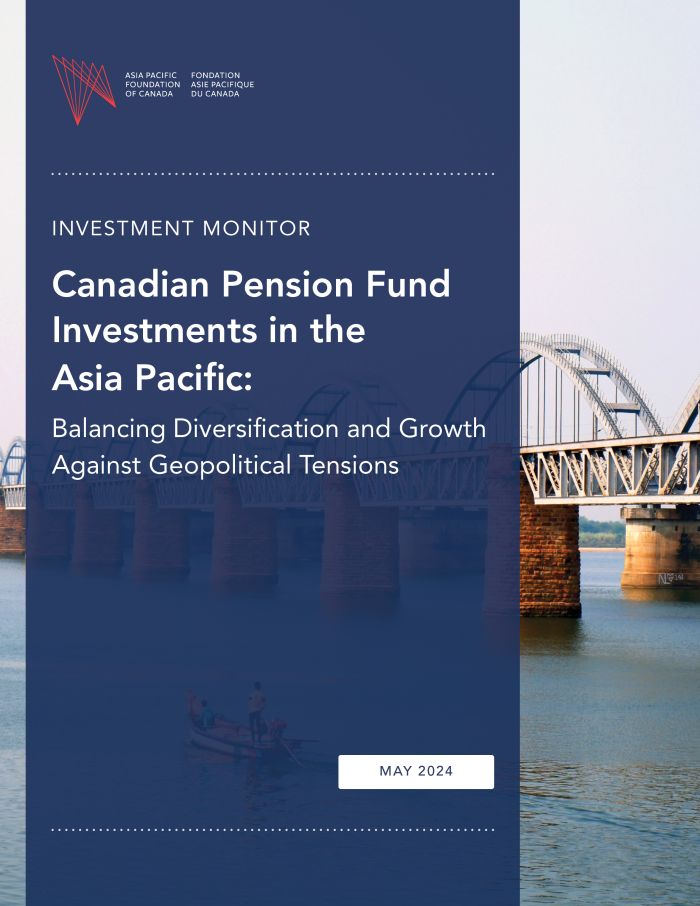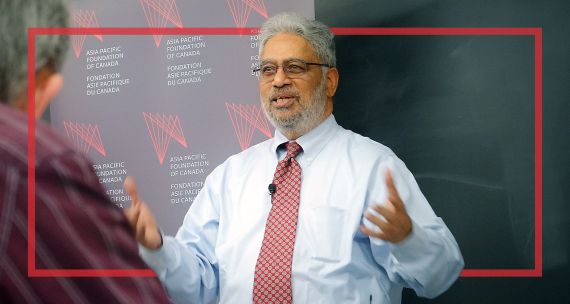In 2023, Canadian pension funds held C$2.2T in capital, according to Statistics Canada. These funds are increasingly becoming more active investors in the Asia Pacific as they seek to benefit from the region’s rapid economic growth and demand for large, long-term infrastructure projects.
The Asia Pacific Foundation of Canada’s latest Investment Monitor report, Canadian Pension Fund Investments in the Asia Pacific: Balancing Diversification and Growth Against Geopolitical Tensions, provides an overview of Canadian pension funds' investment in the Asia Pacific, with a specific focus on their engagement in India.
According to our Investment Monitor data, which provides information on Canada-Asia Pacific investment flows into the region at the national and sub-national levels, pension fund investors accounted for around 50 per cent of total Canadian investment flows into the region from 2019-2023. The database is publicly available on the Investment Monitor website, investmentmonitor.ca. The Asia Pacific Foundation of Canada is grateful for the sponsorship and support it has received from Export Development Canada for the Investment Monitor project.
Key Report Takeaways
Our Canadian Pension Fund Investments in the Asia Pacific report reveals that investment flows into the region from Canadian pension funds began growing in the 2010s and peaked in 2021 with C$22B invested in Asia Pacific economies that year, before dropping to C$8B and C$2.6B invested in 2022 and 2023, respectively.
At the national level, Australia has been the top recipient of Canadian pension fund investment flows, receiving 45 per cent of the funds’ investment flows into this region between 2003 and 2018, and more than 50 per cent of these flows from 2019-2023. China was the second-largest recipient between 2003-2018, receiving 19 per cent of total Canadian pension fund investment flows into the region, but from 2019-2023 has only received 3 per cent of total investment flows. Canadian pension fund investment flows into China dropped to C$627M in 2020, and even further to C$423M in 2021, before ceasing in 2022.
From 2019 to 2023, India replaced China as the second-largest recipient of Canadian pension fund investment flows into the region, accounting for 25 per cent of total investment flows, a significant increase from the 10 per cent of investment flows the country received between 2003-2018. The top three sectors in India to receive investment flows from Canadian pension funds between 2013-2023 were real estate (comprising 57% of Canadian pension funds investment in India with over C$3.8B received), financial services (C$3B invested), and industrial transportation (roughly C$2.6B invested).
This report finds that there are opportunities for Canadian pension funds to expand their investments in India based on two key factors: regional growth, with the Asia Pacific responsible for an estimated 70 per cent of global economic growth in 2023, and India’s domestic policies, which support the development of infrastructure and renewable energy projects – key investment sectors for pension funds.
With Canada-India political tensions showing no signs of improving in the immediate future, Canadian investors will have to continue monitoring both the opportunities and risks of investing in an economy that is expected to become the world’s third-largest by 2027.
We still anticipate that Canadian pension funds will expand their presence, not only in India but also elsewhere in the Asia Pacific, in the future. If they do, this expanded presence will align with the aims of Canada’s Indo-Pacific Strategy and its calls to increase investment and trade with the region.







